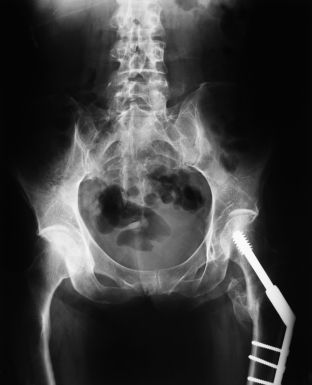Search
Bone Fractures In The Elderly Require Special Attention To Improve Recovery & Prevent Complications
 Many elderly people suffer broken bones during admissions to nursing homes due to; falls, being dropped, or perhaps improper care from staff. Regardless how the fracture occurred, a fractured bone in the elderly must be timely identified and treated.
Many elderly people suffer broken bones during admissions to nursing homes due to; falls, being dropped, or perhaps improper care from staff. Regardless how the fracture occurred, a fractured bone in the elderly must be timely identified and treated.
What is a fracture?
A fracture is a broken bone that requires medical attention. Fifty percent of women over age fifty and twenty-five percent of men over age fifty will suffer from an age-related bone fracture sometime in their lifetime.
Elderly people are particularly susceptible to broken bones because as bones age, they lose the ability to resist the formation and growth of cracks that can lead to bone breaks because they cannot withstand as much pressure as younger bones. Unfortunately, as we age, our bodies ability to heal fractures is compromised.
Nursing home staff can take steps to help maintain bone health in elderly nursing home residents:
- Regular exercise
- Adequate amounts of calcium
- Adequate amounts of vitamin D (essential for calcium absorption)
Osteoporatic Nursing Home Patients and fractures
Elderly nursing home residents who have osteoporosis (porous weak bones) or other conditions that lead to weakened bones or decreased bone density are at risk for bone fractures. Weak bones have low levels of calcium, phosphorous, and other minerals in the bones, which makes people more susceptible to fractures because the bones are more brittle.
Women suffering from osteoporosis are twice as likely to suffer from bone fractures than men with osteoporosis. Fractures from osteoporosis are most common in the spine and hips (bones that directly support your weight), and the wrists from bracing. Therefore, nursing home staff should take extra precautions to prevent falls and provide adequate nutrition to maintain the well-being of residents.
Diabetic Nursing Home Patients and fractures
Many nursing home residents also suffer from diabetes. A recent study suggests that there is an association between a drug introduced in the 1990s to help treat type 2 diabetes (thiazolidinediones) and bone fracture. The increased risk of fracture increased as the duration of the drug treatment increased and was observed in both men and women. Therefore, nursing home residents who have been treated with this drug also might have a further increased risk of bone fractures.
Medical treatment for fractures in the elderly
Treatment for bone fractures depends on the location of the break. For most fractures occurring in the arms, legs, hands, and feet, the initial treatment is splinting the injured limb and immobilizing the joints above and below an injury to prevent movement at the fracture site. Then, the splint is removed and replaced by a cast.
Some breaks might also require surgery in order to properly align bone fragments, increase stability, and ensure that bones will heal properly. Some fractures might also require metal hardware (pins, plates, or rods) to hold the bones in place. Older adults heal slower than younger people, which can cause additional complications and mobility issues for nursing home residents.
How we can help
Depending on the circumstances regarding the fractured bones, the medical facility may be responsible for the damages relating to the fracture. In many cases, we have successfully recovered damages for our clients’, medical bills, medical equipment, pain and disability. If you believe that a nursing home is responsible for your broken bone, we would be honored to speak with you to discuss your legal rights. (800) 926-7565
Resources:
Mayo Clinic: Fractures
Lawrence Berkeley National Laboratory: Why Older People Suffer More Bone Fractures
Science Daily: Risk of Bone Fractures Associated with Use of Diabetes Drug
Related Nursing Home Law Center LLC Blog Entries:
Nursing Home Sued After Resident Fractures Both Hips In Separate Falls
Nursing Home Cited For Mistreatment Of Resident Following Investigation Of Resident’s Fractured Neck
 Nursing Home Law News
Nursing Home Law News

